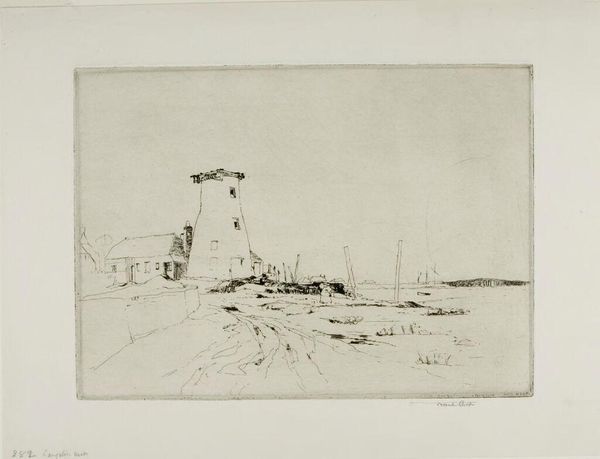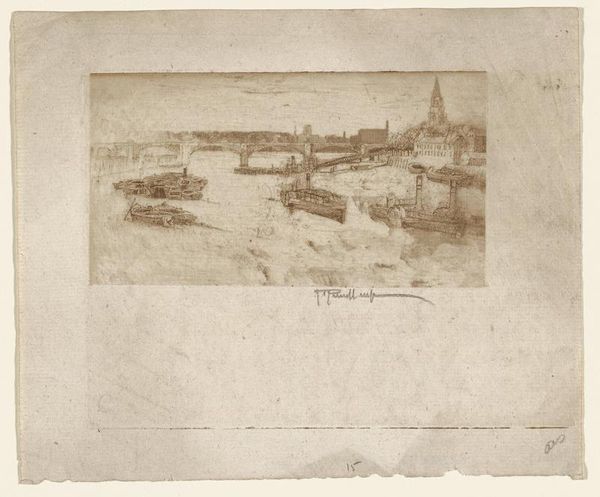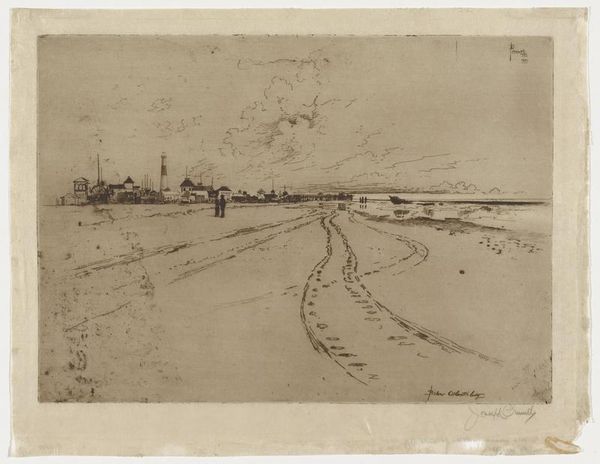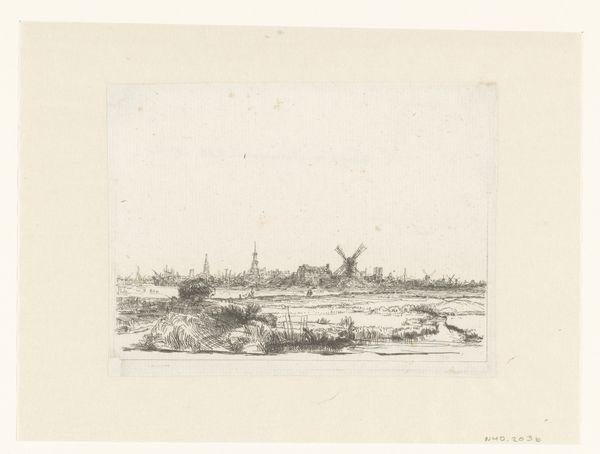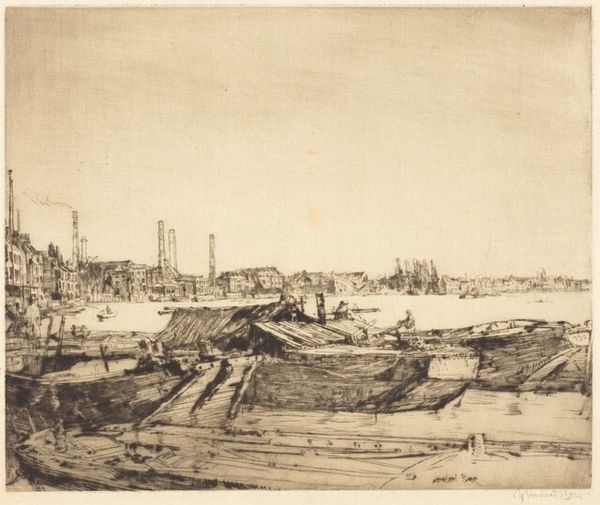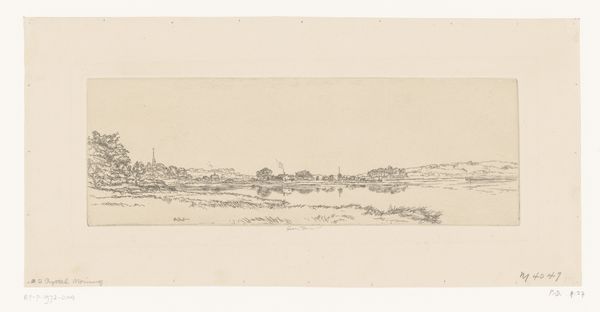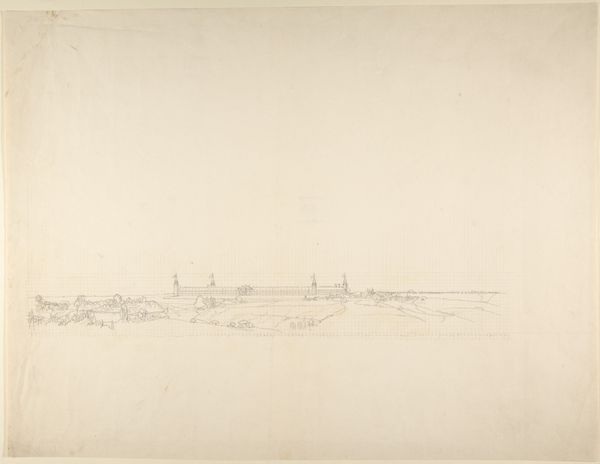
drawing, pencil
#
pencil drawn
#
drawing
#
dutch-golden-age
#
pencil sketch
#
landscape
#
charcoal drawing
#
pencil drawing
#
pencil
#
cityscape
#
watercolor
#
realism
Dimensions: height 200 mm, width 687 mm
Copyright: Rijks Museum: Open Domain
Curator: Here we have "Gezicht op Schenckenschans, 1672" by the Frères Moreau, rendered sometime between 1900 and 1903. It appears to be a pencil drawing, capturing a sweeping cityscape. Editor: It strikes me as remarkably bleak. The monochromatic palette emphasizes the flatness, and that sense of distant buildings lends a real austerity. It seems like more than just a landscape, and also perhaps a quiet comment. Curator: The landscape certainly holds symbolic weight. Schenckenschans was a strategically vital fortress during the Dutch Golden Age, frequently contested territory. This drawing, though created much later, taps into a potent memory of conflict and resilience. Look at how the Moreau brothers positioned it on the edge, literally facing a threat coming across the water. Editor: True, I do see how the formal qualities reinforce this sense of threat, and perhaps vulnerability. The limited range of tones feels like an exercise in reduction—of the palette but also of the city itself. There's an absence almost. We're not offered lush detail or any visual reassurance through decoration. Curator: This sparseness is precisely what gives the piece its emotional resonance. Consider windmills, those appear in the composition— they are also recurring Dutch symbols which are suggestive of both progress and vulnerability to nature's forces. It becomes not just a cityscape, but a meditation on time, history, and cultural identity. Editor: A cultural identity rooted, perhaps, in that very vulnerability. Thinking of the starkness, I'm reminded of some studies I have read discussing how this sparseness in turn creates resilience and the ability to see past a hard past. Curator: Exactly. The choice of medium is also significant: a simple pencil drawing, almost like a sketch from memory, reinforces that the power of it does not necessarily need the use of grand elements. It suggests immediacy, a direct connection to the subject, unburdened by grandeur. Editor: Yes. Formally, it invites us to reflect on the raw, skeletal elements. The materiality amplifies its thematic power. The pencil line itself is brittle and ephemeral, a tangible marker of mortality within the grand sweep of historical events. Curator: A quiet reminder that even mighty fortresses and cultural symbols are transient, always subject to the whims of time and fortune. Thank you for this new perspective, it has allowed me to see what new depth the history gives to the drawing itself. Editor: And you, to help realize the potential within these forms in themselves!
Comments
No comments
Be the first to comment and join the conversation on the ultimate creative platform.




